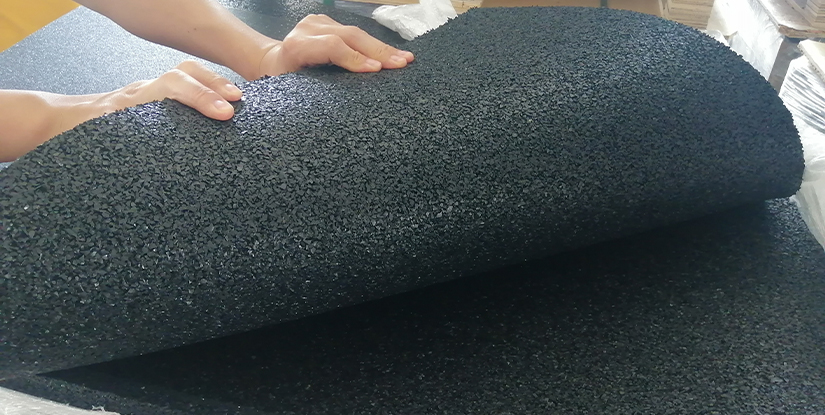Rowing Machine Mat Guide: Choose, Install, and Maintain

Why a Rowing Machine Mat Matters
Using a rowing machine at home or in a commercial gym demands more than the machine itself. A high-quality rowing machine mat protects floors, reduces noise and vibration, stabilizes equipment, and prolongs the life of both the rower and the flooring. Selecting the right mat is a small investment that yields significant benefits in performance, safety, and maintenance.
Key Benefits
- Floor protection: Prevents scratches, dents, and moisture damage on hardwood, laminate, tile, and concrete.
- Noise and vibration reduction: Dampens mechanical noise and reduces sound transmission to adjacent rooms or floors.
- Stability and slip resistance: Provides a non-slip surface that keeps the rowing machine secure during intense workouts.
- Hygiene and easy cleaning: Creates a barrier against sweat and dirt that’s simple to wipe down.
- Equipment longevity: Minimizes wear on frame feet, casters, and feet-leveling components.
Materials and Construction
Mats are commonly manufactured from rubber, PVC, TPE, or layered composites. Each material has trade-offs:
- Rubber: Durable, excellent noise dampening, and resistant to compression. Often heavier and ideal for commercial use.
- PVC: Lightweight and economical, with good moisture resistance but less durable under heavy continuous loads.
- TPE (Thermoplastic Elastomer): Eco-friendlier than PVC, flexible, and provides balanced shock absorption and durability.
- Composite/Layered Mats: Combine a dense core for stability with a softer top layer for grip and noise reduction.
Size and Thickness Considerations
Choose a mat that fully accommodates the footprint of your rowing machine, including rail length and footrests. Standard considerations:
- Length: Ensure the mat covers the entire rail plus extra space at both ends to protect against foot placement and movement.
- Width: A width of 24–36 inches is common; wider mats offer more lateral protection.
- Thickness: 3–8 mm suits light home use, 8–12 mm for heavier rowers or commercial settings. Thicker mats increase noise dampening but add weight and cost.
Compatibility with Rowing Types
Most mats work with air, magnetic, water, and hydraulic rowers. For air and water rowers that produce more vibration and airflow, prioritize thicker polyurethane or rubber mats with superior damping characteristics. Magnetic rowers typically require less vibration control, so a medium-density mat may suffice.
Installation and Placement
Place the mat on a clean, dry surface. Allow the mat to acclimate to room temperature if shipped rolled. Center the rowing machine on the mat, then adjust machine feet to ensure level placement. Avoid folding mats; store rolled or flat to prevent creases. Use double-sided tape or non-permanent adhesive if slippage occurs on very smooth floors, but test to confirm the tape will not damage the floor finish.
Cleaning and Maintenance
Routine cleaning preserves mat performance and hygiene. Best practices include:
- Wipe with a damp microfiber cloth after each session to remove sweat and debris.
- Weekly cleaning with mild soap and water; avoid harsh solvents that degrade material.
- For rubber mats, apply manufacturer-recommended protectant sparingly to maintain flexibility.
- Inspect for tears, compression marks, or permanent indentations; replace the mat when structural integrity is compromised.
Environmental and Health Considerations
Low-VOC materials reduce off-gassing in small workout spaces. Look for mats labeled phthalate-free or with third-party certifications for indoor air quality. Recyclable or biodegradable materials support sustainability goals; consider TPE or natural rubber options if environmental impact is a priority.
Buying Guide: What to Look For
- Correct dimensions for your machine and workout space.
- Appropriate thickness for noise, vibration, and load-bearing needs.
- High-density materials for long-term resilience and compression resistance.
- Non-slip texture on both top and bottom surfaces for safety.
- Warranty and return policies—test compatibility and quality without risk.
Cost vs. Value
Price points range from budget-friendly to premium commercial-grade mats. Invest based on usage frequency and equipment weight. For daily, intense training or commercial environments, allocating more toward a durable mat reduces long-term replacement and flooring repair costs.
Summary
A well-chosen rowing machine mat is an essential accessory that safeguards flooring, improves workout comfort, and enhances equipment life. Prioritize material quality, correct sizing, and adequate thickness to match your rowing style and environment.
FAQs
- Do I need a mat for a rowing machine? Yes—protects floors, reduces noise, and stabilizes the machine.
- What thickness is best? 8–12 mm for heavy or commercial use; 3–8 mm for home use.
- Which material is most durable? Natural or synthetic rubber offers the best durability and damping.
- Can I use an exercise bike mat? Often yes if dimensions and thickness match the rower’s footprint.
- How do I clean the mat? Wipe with mild soap and water; avoid harsh chemicals.
- Will a mat prevent all noise? It reduces impact and vibration noise but won’t eliminate airflow noise from air rowers.
- Can a mat be used on carpet? Yes, but use a thicker mat for stability on plush carpet.
- How long should a good mat last? With normal use, quality mats last several years; commercial use may require earlier replacement.
- Are eco-friendly mats effective? Yes—TPE and natural rubber options offer good performance with lower environmental impact.

